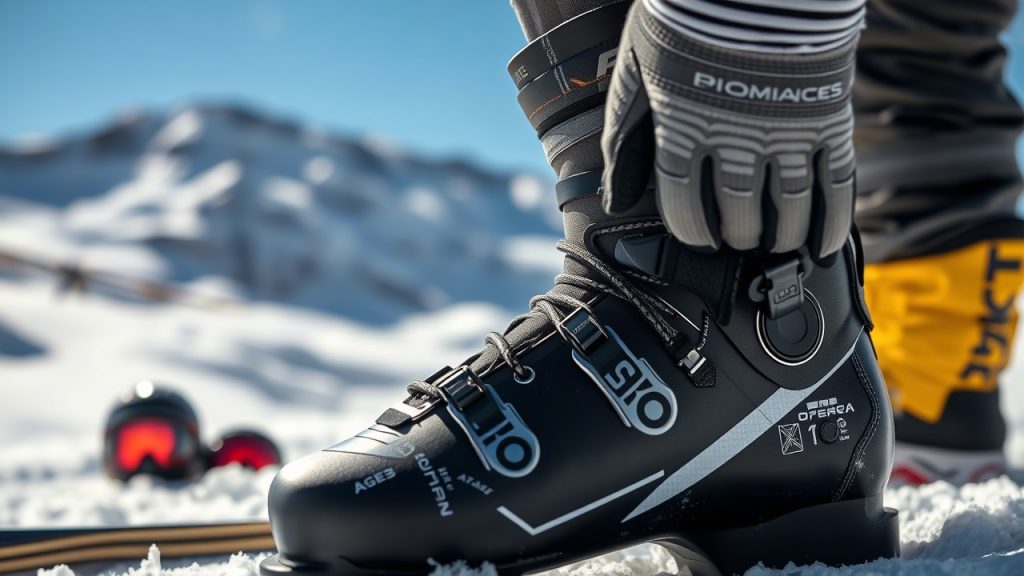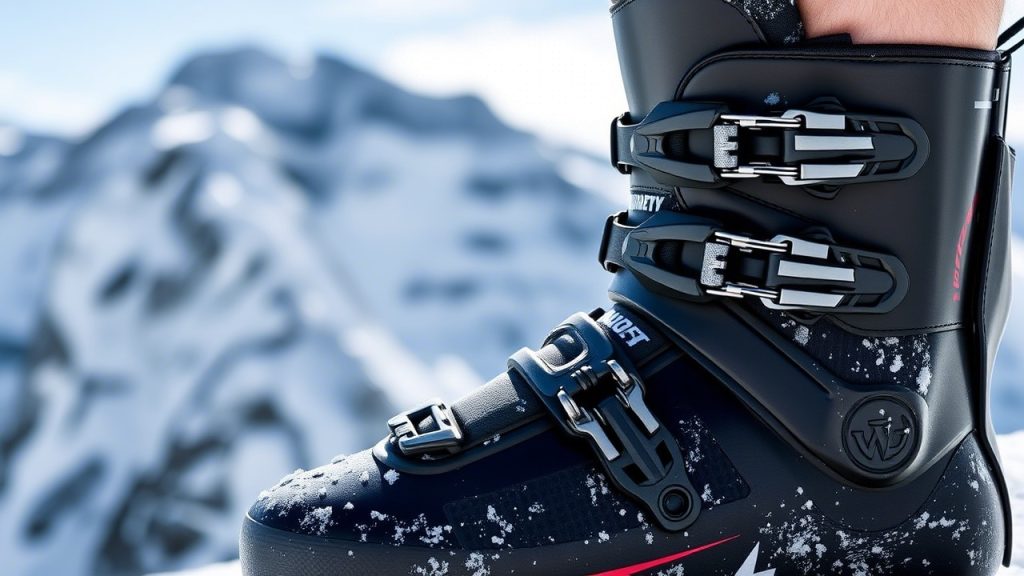10 Best Ski Boot Size Chart Ideas to Find Your Perfect Fit
Finding the right ski boot fit can make or break your skiing experience. Ski boots play a crucial role in providing comfort, control, and power transfer between your body and the skis. A properly fitted boot will allow you to ski longer, perform better, and avoid unnecessary discomfort. However, with various manufacturers and different sizing systems, figuring out your perfect ski boot size can be a daunting task.
We will guide you through the process of choosing the right ski boot size. You’ll learn how ski boot sizing works, what factors influence fit, and the best ski boot size charts to help you make an informed decision. We’ve also compiled answers to frequently asked questions to clear up any confusion. Let’s dive into the world of ski boot fitting!
Why Is Finding the Right Ski Boot Fit Important?
Ski boots are the essential link between your body and your skis. They allow you to control your skis and provide the responsiveness needed for high-performance skiing. The right boot size will give you control, comfort, and support, while the wrong size could lead to issues such as:
- Discomfort: Ski boots that are too tight or too loose can cause pain, blisters, or numbness.
- Reduced Performance: A boot that doesn’t fit properly won’t allow for effective power transfer, reducing your ability to control your skis.
- Injury: Poorly fitting boots can lead to foot and ankle problems, which may result in injuries while skiing.
Now that we understand the importance of proper boot fit, let’s look at some ski boot size charts and tips to help you find your perfect fit.
10 Best Ski Boot Size Chart Ideas
Ski boot sizing can be a bit complicated due to the variety of sizing systems used by manufacturers. But don’t worry—below is a collection of the best ski boot size chart ideas to help you navigate through the process.
1. The Mondo Point Size Chart
The Mondo Point system is the most widely used sizing system for ski boots worldwide. It measures the length of your foot in centimeters, ensuring a more precise fit compared to traditional shoe sizes. The Mondo Point size is the length of your foot in centimeters, and ski boots are typically sized in half-centimeter increments.
Example Chart:
| Mondo Point Size (cm) | US Men’s Size | US Women’s Size |
|---|---|---|
| 22.0 | 4.0 | 5.0 |
| 23.0 | 5.0 | 6.0 |
| 24.0 | 6.0 | 7.0 |
| 25.0 | 7.0 | 8.0 |
| 26.0 | 8.0 | 9.0 |
| 27.0 | 9.0 | 10.0 |
| 28.0 | 10.0 | 11.0 |
2. US Size to Mondo Point Conversion Chart
If you’re familiar with US shoe sizing, this chart will help you convert your US shoe size into the Mondo Point system. This is helpful because some ski boot brands may provide size recommendations in US shoe sizes.
Example Chart:
| US Men’s Size | Mondo Point Size (cm) | US Women’s Size | Mondo Point Size (cm) |
|---|---|---|---|
| 7 | 25.0 | 8 | 25.5 |
| 8 | 26.0 | 9 | 26.5 |
| 9 | 27.0 | 10 | 27.5 |
| 10 | 28.0 | 11 | 28.5 |
| 11 | 29.0 | 12 | 29.5 |
3. Foot Width and Ski Boot Fit Chart
Beyond the length of your foot, it’s essential to consider the width. Ski boot manufacturers often categorize boots by width, such as “narrow,” “medium,” or “wide.” Below is a chart that can help you determine which boot width might be the best fit for your foot.
| Foot Width (mm) | Boot Width Category |
|---|---|
| 98-100 | Narrow |
| 101-103 | Medium |
| 104-106 | Wide |
To measure your foot width, simply use a ruler to measure the widest part of your foot (usually across the ball area). Keep in mind that ski boots are designed to fit snugly, and even a medium or wide boot can feel tight at first.

4. Ski Boot Flex Rating Chart
Flex rating is another key factor in finding the right ski boot. Flex refers to the stiffness of the boot, which affects how it responds to your movements. Ski boots come in a variety of flex ratings, which are important for skiers at different skill levels.
Example Chart:
| Ski Boot Flex Rating | Ideal for |
|---|---|
| 50-60 | Beginner skiers |
| 60-80 | Intermediate skiers |
| 80-100 | Advanced skiers |
| 100-120 | Expert skiers |
| 120+ | Professional skiers |
If you’re just starting out, a softer flex (50-60) is ideal as it allows for easier control. Experienced skiers will want a stiffer boot (100-120) to achieve greater responsiveness and power transfer.
5. Ski Boot Sizing Chart for Children
Ski boots for children come in different sizing categories, and they often have a different fit due to growing feet. Use the following chart to choose the correct size for your young skier.
Example Chart:
| Mondo Point Size (cm) | US Kids’ Size |
|---|---|
| 18.0 | 11C |
| 19.0 | 12C |
| 20.0 | 13C |
| 21.0 | 1Y |
| 22.0 | 2Y |
6. European Size to Mondo Point Conversion
European shoe sizes are commonly used by many ski boot manufacturers. If you’re used to European sizing, refer to the following conversion chart to find the correct Mondo Point size.
Example Chart:
| European Size (EU) | Mondo Point Size (cm) |
|---|---|
| 38 | 24.0 |
| 39 | 25.0 |
| 40 | 26.0 |
| 41 | 27.0 |
| 42 | 28.0 |
| 43 | 29.0 |
7. Ski Boot Size Chart by Brand
Each ski boot manufacturer may have slight variations in sizing. While Mondo Point is the most common system, some brands have specific sizing charts based on their unique design and fit. Always refer to the brand’s size chart for the most accurate fitting.
Example Chart (Brand-Specific Sizing):
| Brand | US Men’s Size | Mondo Point Size (cm) |
|---|---|---|
| Salomon | 8 | 25.5 |
| Atomic | 9 | 26.0 |
| Nordica | 10 | 27.0 |
| Lange | 11 | 28.0 |
| Tecnica | 12 | 29.0 |
8. How to Measure Your Foot for Ski Boots
To ensure you get the correct size, measuring your feet properly is key. Follow these steps to measure your feet accurately:
- Stand on a piece of paper and trace the outline of your foot.
- Measure the length from the heel to the tip of the toe (in centimeters).
- Measure the width at the widest part of your foot.
- Compare your measurements to a sizing chart.
This step is critical as it ensures that you are measuring both length and width, which is crucial for getting the right fit.

9. Choosing Ski Boots Based on Skill Level
Selecting ski boots that match your skill level is vital to enhance your skiing experience. Here’s a quick guide to help you:
- Beginner: Look for boots with a softer flex and greater comfort. These are more forgiving and easier to control.
- Intermediate: Opt for a boot with a medium flex for better responsiveness and control.
- Advanced/Expert: Choose a stiff flex boot for maximum control and performance.
10. Custom Fitting and Boot Thermoforming
If you’re still unsure about the right fit, many ski boot brands offer custom fitting or thermoforming. Thermoforming involves heating the liner of the boot, allowing it to mold to the shape of your foot. This is an excellent option if you want the most precise fit possible.
Frequently Asked Questions
1. How do I determine my ski boot size?
Ski boot sizes are measured using the Mondopoint system, which is based on the length of your foot in centimeters. To find your size, measure your foot from heel to toe and match it to a ski boot size chart.
2. What is the Mondopoint system?
The Mondopoint system is a universal measurement standard for ski boots, using centimeters to define foot length. For example, if your foot measures 27 cm, your ski boot size is typically Mondo 27.
3. How should ski boots fit?
Ski boots should feel snug but not painful. Your toes should lightly touch the front of the boot when standing, but when you bend your knees into a skiing stance, your toes should move back slightly.
4. What is the difference between men’s and women’s ski boot sizes?
Men’s and women’s ski boots often follow the same Mondopoint scale, but women’s boots tend to have a narrower heel, a lower cuff height, and softer flex for better fit and comfort.
5. How do I convert my regular shoe size to ski boot size?
Regular shoe sizes don’t always directly match ski boot sizes. It’s best to use a Mondopoint conversion chart or measure your foot in centimeters and compare it to a ski boot size chart.
6. What is ski boot flex, and why does it matter?
Ski boot flex determines how stiff or soft the boot is. Lower flex numbers (50-80) are softer and more forgiving for beginners, while higher flex numbers (100-130) provide more stiffness for advanced skiers.
7. How do I know if my ski boots are too big?
If your foot moves around inside the boot or your heel lifts when flexing forward, your ski boots might be too big. This can affect control and comfort on the slopes.
8. Should I size up or down for ski boots?
Always go for a snug fit rather than sizing up. Ski boots pack out over time, meaning they loosen as the liner compresses, so a tighter fit initially is ideal.
9. Do different ski brands have different size charts?
Yes, ski boot sizing can vary slightly between brands. It’s always recommended to check the brand-specific size chart before purchasing.
10. Can I adjust ski boots if they don’t fit perfectly?
Yes, many ski boots allow for custom fitting. Bootfitters can adjust liners, stretch shells, and make modifications to improve comfort and performance.
Conclusion
Choosing the right ski boot size and fit can significantly enhance your skiing experience. By understanding the sizing systems, foot width, flex index, and various other factors, you can ensure that your ski boots are the perfect match for your needs. Always remember to try boots on and consult a professional boot fitter to achieve the best possible fit.
Whether you’re hitting the slopes for the first time or you’re a seasoned skier, your ski boots should give you the comfort, performance, and safety you need to enjoy every moment on the mountain.





